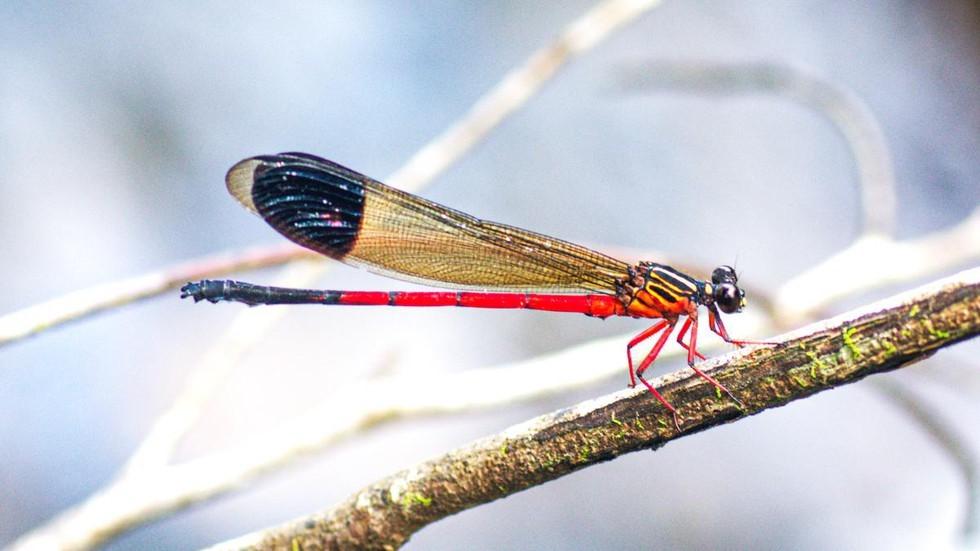
Euphaea Wayanadensis

04.04.2025
Euphaea Wayanadensis
|
For Prelims: About Euphaea wayanadensis, Key Morphological Features |
Why in the news?
A new species of damselfly, Euphaea wayanadensis, has been discovered in the Wayanad region of the Western Ghats, Kerala.
About Euphaea wayanadensis
- Classification: Belongs to the family Euphaeidae.
- First sightings: Initially observed in 2013 at the Kalindi River, Thirunelli, in Wayanad district, Kerala.
- Further sightings occurred from 2013 to 2019 in Wayanad, followed by more observations from 2019 to 2023 in Aralam (Kannur, Kerala) and the western slopes of Coorg (Karnataka).
Identification challenges:
-
- Initially misidentified as Euphaea pseudo dispar, a species from Maharashtra.
- Later confirmed as a distinct species through detailed morphological study and genetic analysis.
Key Morphological Features
- Distinctive hind wing: Features a longer black patch compared to related species.
- Striking colouration: Males display broader and uninterrupted humeral and antehumeral stripes.
- Unique genital structure: The male genital vesicle exhibits structural traits that differ from closely related species.
Habitat and Distribution:
- Prefers fast-flowing streams with rocky beds and aquatic vegetation.
- Thrives in evergreen and semi-evergreen forest regions along stream banks.
- Active throughout the year, except in the dry seasons of March and April.
- Shows highly restricted distribution, making it vulnerable to habitat loss and climate change.
Source: The Hindu
A newly discovered species of damselfly, Euphaea wayanadensis, was found in which Indian State?
A.Tamil Nadu
B.Kerala
C.Karnataka
D.Andhra Pradesh
Answer B